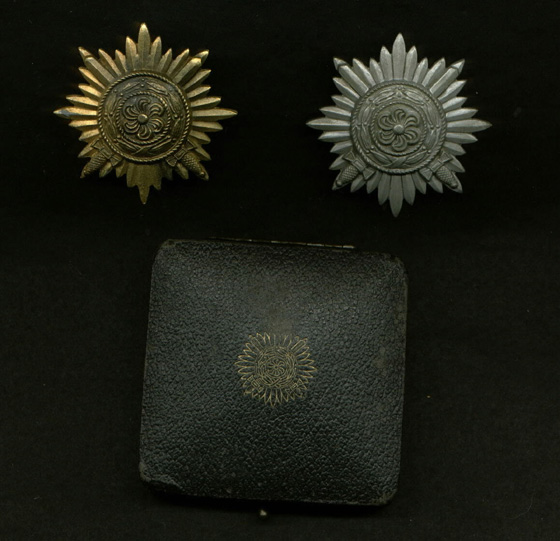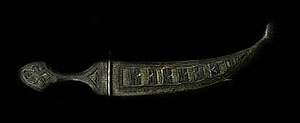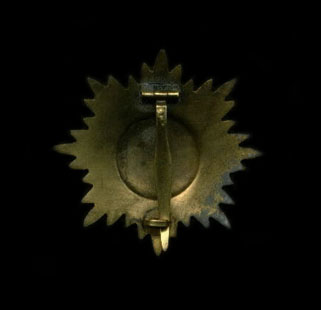|
Eastern Peoples As early
as July 1941, Russian POWs were allowed to offer their services to the German
Army formations as "Hilfswilliger" (Volunteer helpers or auxiliaries).
By the end of 1941 the Wehrmacht employed around 150,000 Hiwis as they were known
by the Germans. By 1942 these men were use by the Germans to form military
anti-partisan formations known as "Osttruppen" (Eastern Troops). | |
|
Eastern Peoples First Class Badge Above shows the 1st class gold badge with swords, which was the highest Eastern Peoples military award. | |
|
At the beginning these decorations were awarded exclusively to Russians, but
eventually German personnel who commanded these troops were allowed to wear such
awards, giving these medals a more legitimatize meaning. 
Eastern Peoples Silver and Gold Class Badges
Above
shows the 1st class silver and gold badge with swords. By late 1943, Hitler relented and allowed these Osttruppen to wear German War Badges such as the Infantry, General Assault and Wounded badges along with the Eastern People awards. By 1944, the Osttruppen were granted the right to the Iron Cross 1st and 2nd class. No Russian soldier serving in the German Army ever received the Knight's Cross to the Iron Cross. | |
|
Eastern Peoples 2nd Class Medals
On 14 November 1944, the Germans officially recognized the Russian National Army.
The Commander in Chief of the new Russian Liberation Army was General Andre A.
Vlassov. The men of the Russian Liberation Army received the same Eastern Peoples
awards. According to some sources special ribbons were made and issued on 2nd class
medals, which are as follows:

Above shows two 2nd class medals in gold without swords. | |
|
Sonderverband Bergmann
In November 1941, under the direction of the Chief of the German Military Intelligence
Admiral Canaris a special battalion formed of Eastern volunteers was authorized. In
the Neuhammer training camp five rifle companies composed of the 1st, 4th and 5th
Georgian, 2nd North Caucasian and 3rd Azerbaijani. This Special purpose battalion with
a strength of 1200 men was placed under the command of Captain Theodor Oberlander.
The unit was unique in that it took its oath of allegiance not to Hitler but to the
Army itself. Its Georgian volunteers was the most pro-German because during WW1, Germany
aided the short lived Georgian Republic. | |

Kindjal Pin The unofficial insignia of the detachment was the "Kindjal" (Dagger). The dagger was suggested as insignia by the deputy commander Sonderführer von Kulschenbach. The Kindjal was worn on the left side of the mountain cap. German cadre personnel wore the Kindjal on their collars. |

